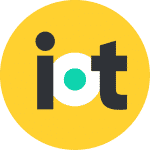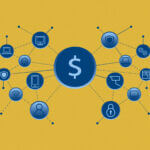
“The Internet of Things – a monstrous phenomenon to fathom. Be prepared to have your life disrupted, for the better or the worse…”
This radical disruption will impact you and the ones closest to you. Your safety, security, health, and convenience are all at stake. This post will give you an intro to IoT and help you take the rights steps to get a grip on the Internet of Things.
Here are the 9 major keys to IoT and a more connected you:
1. Safety and Security
Safety allows you to keep doing you. You want to make sure your family is intact, healthy, and being taken care of through a string of seamless automation. Staying in constant contact is important for safety, or in other words, your well-being.
Being safe during your commute is often overlooked. Technology in cars has substantially helped driving become safer. Rear-view cameras are now standard in every new car for a reason. Check out GM’s LED rearview camera, which is really only your current reverse camera with a new twist.
Traditionally, safety IoT has been geared towards maintenance detection for enterprise-level operations and applications. Today, a similar M2M architecture can be applied to your home, office space, and your city.
Sensors, which are much cheaper these days, can let you know whether or not your water pipes are leaking or are about to burst. If you’re on vacation, you can decide whether or not to receive last-gasp messages that are deployed prior to failure.
Yes, sensors for natural resource management and the future of water, electricity, and gas are for a safe environment. WallyHome, a water leak and mold detection system is perfect for families looking to get smart on water, especially after what happened in Flint, Michigan.
Security has been traditionally dominated by companies such as ADT right? Their customers used to pay for 24/7 alarm monitoring back in the 90s. But with today’s array of smart home starter kits available at Home Depot and push towards a modernized DIY market, your grandma can have a level-one smart home.
Companies like Comcast Xfinity and Vivint also offer these for a monthly cost along with on-demand add-ons such as home streaming to solar, all of these modern features are offered today at $s/per month.
Anyways, it all depends on what level of security you’re striving for. If you want to be notified every time someone is on your property, or you want to be prompted when someone rings your doorbell, go to Home Depot and get trip sensors and a ring doorbell camera. Although, it may be simply more practical to remotely monitor, open, and close your garage with My Q by Chamberlin.
Finally, major security topics you will be learning about in future posts includes cybersecurity, ethical hacking, and data privacy.
2. Wellness
Being healthy is a major key. You are what you eat, says my dietitian friend who encourages a daily workout and proportioned meals. IoT can help you track your wellness with wearables and smart meal apps.
Fitbit, Apple watch, and Samsung have all created new revenue streams made from giving their users workout analytics and the ability to set daily health goals. When these tools are combined, you can maintain your daily eating habits.
Also, connected cups and water bottles can make staying hydrated easy. They provide you nutritional facts and information regarding how you should be eating and drinking every day. If you’re like me, you usually forget to drink enough water. With push notifications that buzz on your wearable, you’ll never be left thirsty for IoT.
Mobile apps around wellness have been around for years now – track your sleep, weight, nutrition, and more. However, the key with wellness IoT is that software is being combined with tangible hardware and equipped with predictive analytics.
When wellness was just software, users were forced to manually add their calorie count and the actions they were taking. Today, a lot of the leg work has been automated with the help of motion, temperature, and humidity sensors.
3. On-Demand and Streaming Services
Amazon Dash is a new service that automates your home’s daily operations. For example, when you place Amazon’s dash button in your bathroom, you can easily place an order for more toilet paper before you run out. Outsourcing your errands frees up your time, no longer do you need to attend to toiletries, party needs, or even food in your pantry.
If you have a baby, ordering diapers can become automatic. Amazon dash, through predictive analytics and self-learning algorithms, can project how many diapers you’re going to need for the week, month, or year.
Ordering food based on how healthy you want to become a breeze as well. Services like Peapod and blue apron provide you food on-demand based, on your preferences and body’s needs. You can even set up automated food services for your dog right through Petsmart and Petco.
Imagine never having to run errands again.
4. Augmented and Virtual Reality
AR and VR are ripe for innovation. Many technology venture capitalists are investing in IoT and are looking at these technologies as a new platform for apps.
Google Glass was the first attempt at AR which displayed the possibilities and capabilities of what the future has to offer you. Google, more recently than glass, also came out with Daydream which turns phones into VR headsets. And of course, Facebook acquired Oculus for a whopping $2 billion a few years ago.
Real-time analytics on your golf stroke can not only improve your game but it can reduce the chance of injury. Having GPS in your motorcycle helmet is also a major to know where you’re going.
AR and VR can pretty much be a wearable that’s worn at all times or in one distinct location. When you’re at work to when you’re sleeping, VR can enhance cognitive abilities and give humans a big boost.
5. Geofencing
Your environment is impacted by your location at all times. A geofence is a virtual barrier in which apps are capable of setting triggers that react depending on your entrance or exit from a vicinity. You define the boundaries as an administrator along with however you’d like to be notified and what you’d like to be notified for.
In the future, geofencing will have a large impact, not only smart homes but also on the retail industry:
Bluetooth Connectivity and LIFI
Imagine your phone connecting to sensors within a store in real-time while you’re shopping. With geofencing, your shopping experience can be more catered to what you’re looking for. Coupons on demand for what you intend to buy, right from the internet.
Just look at Amazon Go, Amazon’s store concept without a check-out line. Or check out the Shopkick app that gives you rewards and gift cards for shopping at certain places.
Predictive Data Analytics
Geofencing gives companies another layer of understanding their customer. Using data analytics, back-end users and administrators can see how often people are using their service, how long they use it, and how well their marketing techniques worked.
For example, 1-800-Flowers geofenced the area around jewelry stores that were close to their flower shops. If you’re shopping for jewelry, it’s more likely that you’ll need flowers too (for your wife, mother, girlfriends, etc.).
Apple’s MFI chip for their Homekit will also be a big player utilizing geofencing. If the Bluetooth on your phone is on, sensors around your Apple SmartHome will start to recognize patterns and eventually automate operations like turning on lights, locking doors, and notifying you if your home is operating out of the norm.
Location-based services and geofencing will be a big part of improving overall customer experience.
6. Aging-in-Place
The elderly are key because you love them. Many times they need assistance living in their own homes or even with you. You need to be confident that they’ll be safe when you’re not around to take care of them and if an emergency happens, that they will be taken care of immediately.
Lifealert is a remotely connected panic button that has been around for ages. Older folk can use it if they have emergencies, like if they fall down in the bathroom or if there’s a fire in their kitchen that they can’t put out. The device has a built-in GPS that relays a SOS message to the nearest authorities in real-time.
Many times, older folk can’t enjoy TV as much as they used to because of their inability to hear. GOgroove Bluetooth TV headphones help the elderly with hearing loss to hear the TV clearly without having to turn up the volume. An ideal solution for the Price is Right and Jeopardy, the RF goes for about 60 sq. ft and is plug-in-play for most existing TVs.
Alarm.com also offers a sensor-based service for the elderly called BeClose. Their sensor box consists of devices made for remote monitoring and pushes notifications, including activity patterns, awareness, alerts, security, and when medications should be taken.
It’s important to love and nurture the elderly because they probably took care of you when you were younger.
7. Entertainment
The biggest key to the Internet of Things revolves around entertainment, comfort, and convenience. Companies like Control 4 have gone public with this need in mind. There is an unlimited amount of customizations that can be made in order to fulfill your entertainment needs.
Value-added services, on top of security, tend to be in the realm of entertainment. Entertainment is primarily focused around the TV but can also expand to music and sound, lighting, overall comfort, and utilization of streaming services.
New formats of delivery are also key. Many new forms include streaming services for videos, movies, and games. Smart platforms like Amazon Echo and the wink hub can also be at the core of entertainment. They allow you to command and control your IoT devices using voice and pattern recognition as well.
Gaming and content streaming services will be the new medium for advertising since live TV viewing has significantly decreased since the introduction of the DVR. PS Now will also be offered as an app on newer smart TVs.
Please share your thoughts on how IoT will impact entertainment and what you would like to see from companies in the future in the comments!
8. Energy
The reason why it’s key to touch on energy is because of the recent advances in energy education. Technology has totally transformed a once boring industry to one of the hottest industries in the world that’s built on historical infrastructure deployments.
Led by companies like ComEd, distributed energy resources combine modular electricity generation, storage capabilities, and the ability to lower your electric utility bills. When combined with other IoT devices within your smart home or smart building, not only can you live more seamlessly, but can save or even make money with “grid friendly” decisions.
You can even customize your energy usage by wearing a band that pushes out locations within your home. A smart hub connected to your energy IoT devices will adjust according to the real-time price of energy – kind of like placing “limit orders” for buying and selling stocks.
Economically, this could work a concept used in finance called arbitrage through blockchain-based financial measurements and smart contracts. Whatever energy you generate during the day is more valuable when your neighbors also want to use it, sort of like bandwidth. With a storage device intact, connected to a Emphase Inverter, you can use the energy harvested at the most optimum time or trade it with your neighbors if you’re away.
Some other takeaways from energy IoT are that hardware costs have been decreasing. This is key when you make a large capital investment in utility scaled critical IoT deployment. being that hardware and software are treated as investments meaning that they increase the value of everyone’s well-being within your electricity service provider’s territory.
Electric vehicles and charging stations also play a role in the future of energy since you can’t rely on gas prices staying low forever. Tesla is leading this effort with the announcement of its powerwall.
WiTricity also allows you to charge your EV wirelessly for SmartCity applications which we will touch on in a future post.
9. Mass Adoption
The only key driver missing from the opportunity of IoT is mass adoption. Many of the technologies mentioned throughout this post are available on the market today for purchase.
But why aren’t you rushing over to Amazon or your local hardware store to buy them? Do you think they’re too expensive? Or maybe you don’t like all of the features of the product? What’s holding you back from turning your home into a smart home and turning your life into a smarter one?
Barriers today are awareness and cost. Time is a solution for both of those according to Metcalfe’s law of users. The positives clearly outweigh the negatives and if you want to advance yourself holistically, you must adopt a connected livelihood.
Don’t fall behind…
Conclusion
If you’re an engineer, entrepreneur, or just an enthusiast, IoT is about to change your world by the millions.
Which IoT devices are key to you? Why?
Written by Parth Kapadia. Parth is an entrepreneurial engineer at Exelon where he leads ComEd’s, Chicagoland’s regulated electric utility, into the future. A NBA fanatic and avid video gamer, Parth resides in Chicago with his wife Anjali and their Australian cattle dog, Mila.





 New Episode
New Episode





 Latest IoT News
Latest IoT News







